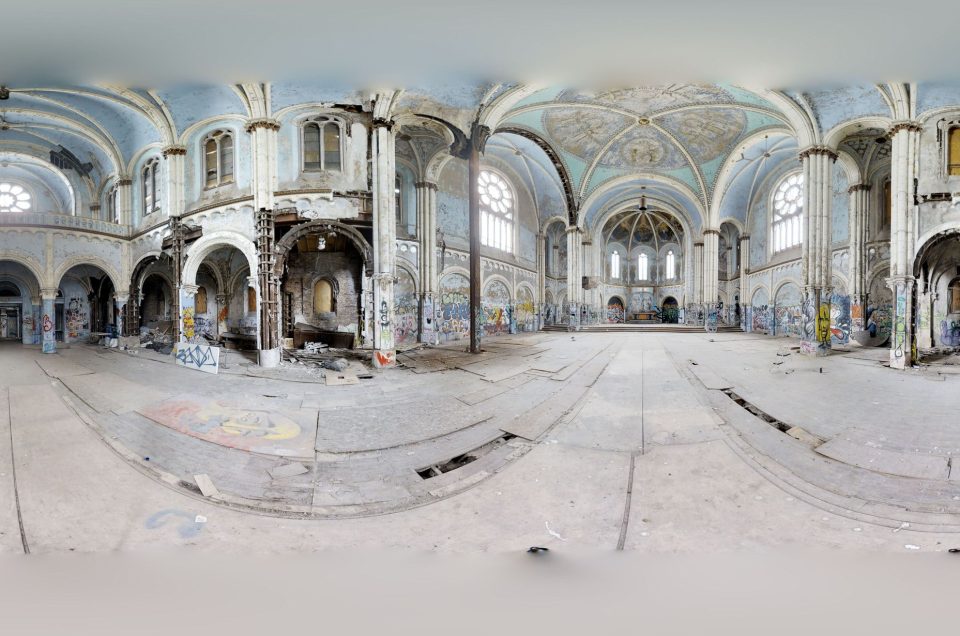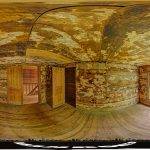The Enigmatic Legacy of the Kansas City Workhouse
Exploring the abandoned Kansas City Workhouse building in Missouri is an intriguing experience, especially through the lens of Google Maps Street View. This digital platform allows for a comprehensive 360-degree view, offering a unique and immersive way to observe the historical site. As users navigate around the building, they can appreciate the architectural details and the sense of abandonment that the structure emanates. The ability to zoom in and out provides a closer look at specific elements of the building, while the 360-degree aspect ensures that no angle is left unseen. This virtual exploration on Google Maps Street View offers a safe and accessible means to witness the remnants of this once-functional building in Kansas City, Missouri.
Image by: Benjamin White
A Journey Through Time
Nestled in the heart of Kansas City, Missouri, at 2001 Vine Street, stands the enigmatic Kansas City Workhouse, a building with a history as captivating as its medieval-styled architecture. Constructed in 1897, this Romanesque revival style castle, designed by architects A. Wallace Love and James Oliver Hog, has witnessed the ebb and flow of time, encapsulating within its walls stories of reform, decay, and revival.
The Dawn of the Workhouse
The Kansas City Workhouse, originally intended to alleviate overcrowding and fire hazards in municipal jails, opened its doors to petty offenders and vagrants. It was a structure built by its first inmates, who quarried the limestone used in its construction. The building featured facilities like a superintendent’s office, a guard room, a chapel, a kitchen, and separate cell areas for men, women, and boys, ensuring segregation and order. This castle was not just a prison; it was a reformatory institution where women sewed uniforms and men contributed to public works, embodying the ethos of labor as a means of rehabilitation.
Operational Challenges and Historical Significance
Throughout its operational years from 1872 to 1924, the Kansas City Workhouse was a subject of controversy and criticism. Reports of overcrowding, unsanitary conditions, lack of medical care, and idle prisoners plagued its reputation. Despite these challenges, the workhouse played a significant role in the city’s penal system, reflecting the evolving attitudes towards punishment and reform during the late 19th and early 20th centuries.
The Decline and Abandonment
After its closure as a penal institution in 1924, the castle served various purposes, including city storage, a Marine training camp, and even a canine euthanasia center. However, by 1972, it was completely decommissioned, leading to its gradual decay. The once formidable structure succumbed to the ravages of time, its roof and internal flooring collapsing, while nature and graffiti artists reclaimed its walls.
Preservation Efforts and Future Prospects
Recognizing its historical value, the Kansas City Workhouse was listed on the Kansas City Registry of Historic Sites in 2007, sparing it from demolition. Efforts to revitalize the site gained momentum in 2014, with significant cleanup initiatives and the involvement of community volunteers. More recently, ambitious plans have emerged to transform the castle into a vibrant community hub. Developers propose to preserve the castle as an event and retail space, with additional plans for a boutique hotel and net-zero energy houses in the vicinity. This redevelopment, part of a larger Enterprise Village Ecosystem project, aims to breathe new life into the area while honoring the castle’s historical legacy.
The Workhouse: A Symbol of Transformation
Today, the Kansas City Workhouse stands as a testament to the city’s rich history and its commitment to preserving the past while innovating for the future. It continues to intrigue and inspire urban explorers and history enthusiasts, serving as a poignant reminder of the ever-changing nature of societal values and urban landscapes.
If you liked this post, you might find these interesting as well, the Slains Castle, the St. John’s Church Tower or the Jekyll Island Amphitheater Ruins.

A 360-degree panoramic image captured inside the abandoned Kansas City Workhouse. Image by Benjamin White
Do you have 360-degree panoramic images captured in an abandoned location? Send your images to Abandonedin360@gmail.com. If you choose to go out and do some urban exploring in your town, here are some safety tips before you head out on your Urbex adventure.
Unlock the secrets of exploration by diving into precise GPS data available exclusively for an array of hidden gems and hundreds of other captivating sites, all within our members’ section. By investing in a Gold Membership, you’re not just gaining access; you’re securing a key to a vast, global archive of abandoned, untouched, and mysterious locations waiting to be discovered. Embark on your adventure with confidence, knowing every corner of the world can be within your reach. Don’t just observe—explore, discover, and claim the extraordinary journey that lies ahead with our treasure trove of world secrets. Subscribe now and transform the way you see the world!
If you want to start shooting 360-degree panoramic images, you might want to look onto one-click 360-degree action cameras.
Click on a state below and explore the top abandoned places for urban exploring in that state.






